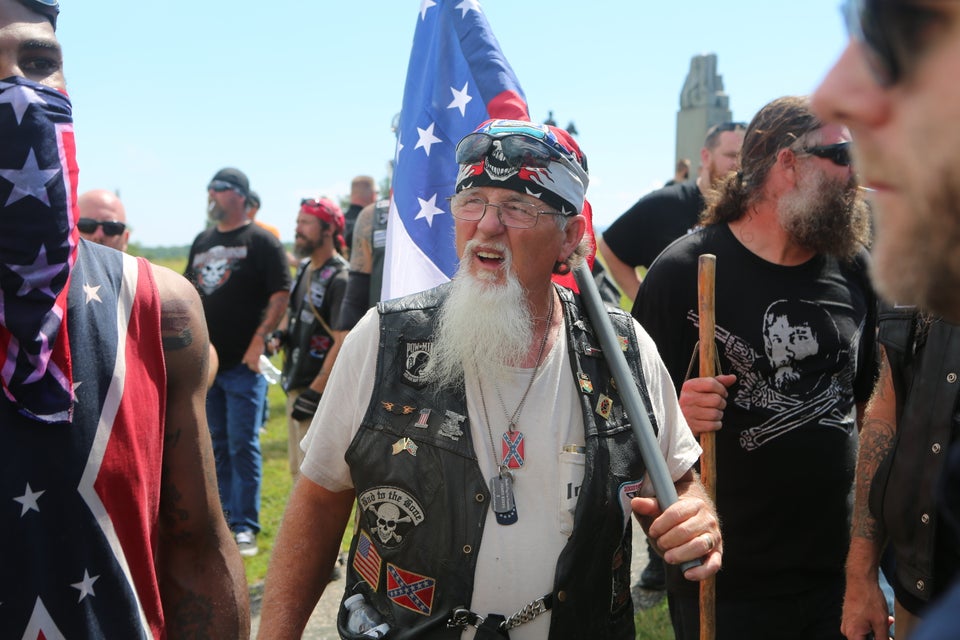WASHINGTON ― As cities around the nation pull down their monuments to the Confederacy, the legacy lives on in the heart of national politics: the U.S. Capitol.
Just steps away from a statue of civil rights hero Rosa Parks stands the statue of Alexander Hamilton Stephens, who served as vice president of the Confederacy. The statue describes him as “STATESMAN ― AUTHOR ―PATRIOT.” The inscription offers his credo: “I am afraid of nothing on the earth, above the earth, beneath the earth, except to do wrong.”
In 1861, he gave a speech in which he defended the institution of slavery and said it was “an error” to assume “the equality of the races.”
“Our new government is founded upon exactly the opposite idea; its foundations are laid, its corner-stone rests, upon the great truth that the negro is not equal to the white man; that slavery subordination to the superior race is his natural and normal condition,” he said.
His statue is part of the National Statuary Hall Collection. Each state has only two statues in this collection, which is meant to represent some of the most notable figures in American history. The state of Georgia contributed Stephens’ statue in 1927.
On Thursday, House Minority Leader Nancy Pelosi (D-Calif.) called the inclusion of Confederate statues “reprehensible” and said they should be removed.
“There is no room for celebrating the violent bigotry of the men of the Confederacy in the hallowed halls of the United States Capitol or in places of honor across the country,” she said.
Sen. Cory Booker (D-N.J.) announced Wednesday that he plans to introduce legislation to remove Confederate statues from the Capitol.
“We will never solve America’s race problem if we continue to honor traitors who fought against the United States in order to keep African Americans in chains. By the way, thank God, they lost,” added Rep. Cedric Richmond (D-La.), chair of the Congressional Black Caucus, in a statement to ABC News.
The renewed attention on these monuments comes after President Donald Trump defended white supremacists, including neo-Nazis, during their violent rally in Charlottesville, Virginia. over the weekend regarding the removal of a tribute to Gen. Robert E. Lee.
Trump said there were “very fine people on both sides” and added that “both sides” were to blame for the violence. On Thursday morning, he said it was a shame the country was removing “beautiful” monuments to the country’s history.
Below are some of the Confederate-era statues in the U.S. Capitol, and thoughts from the states’ senators on Booker’s legislation and the monuments.
John C. Calhoun and Wade Hampton, South Carolina
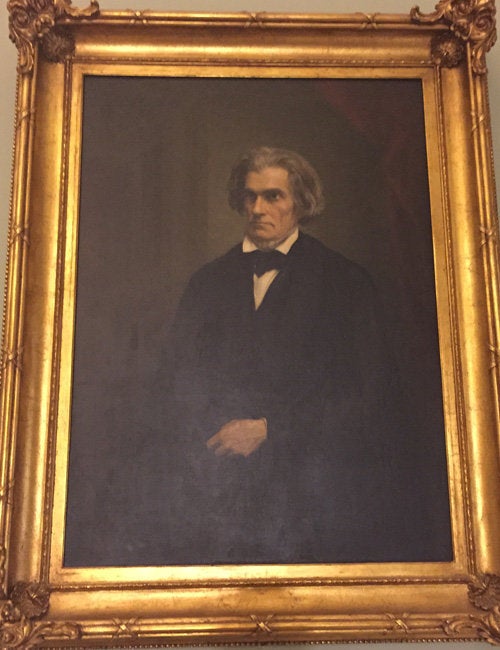
Although Calhoun died before the Civil War, he led the pro-slavery faction while a senator from South Carolina in the years leading up to it. He famously described slavery as a “positive good” rather than a “necessary evil.” He later served as secretary of war, secretary of state and vice president.
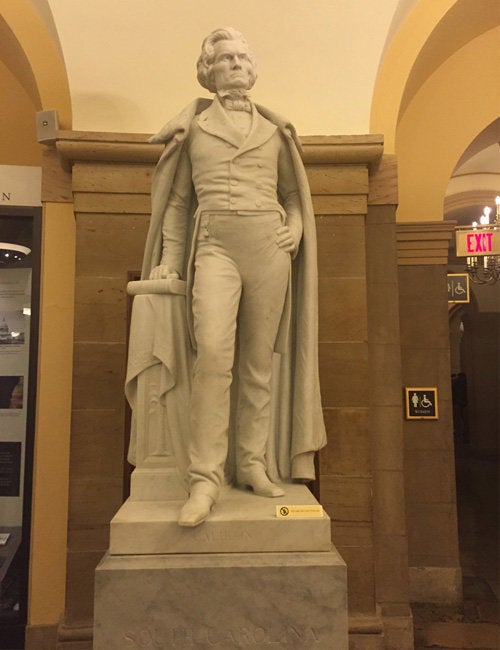
His portrait hangs just outside the LBJ room, where Republicans gather weekly for lunch meetings.
South Carolina’s other statue is of Wade Hampton, who was one of the state’s largest slaveholders and a Confederate cavalry leader.
The office of Sen. Lindsey Graham (R-S.C.) declined to weigh in on the issue, and Sen. Tim Scott (R-S.C.) did not return a request for comment.
Jefferson Davis, Mississippi
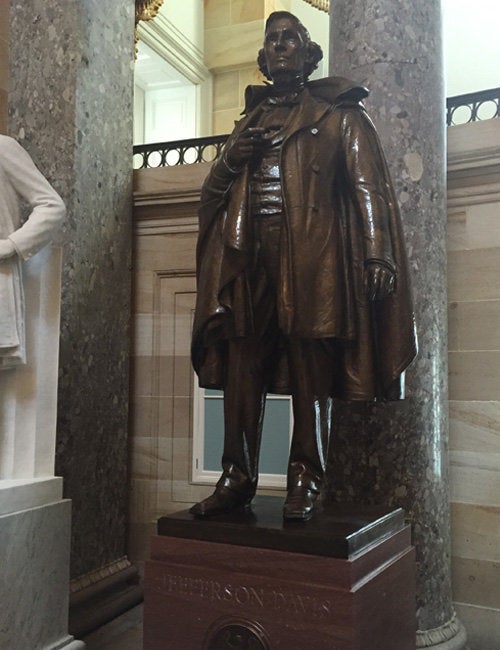
Davis was the president of the Confederacy. The office of Sen. Roger Wicker (R-Miss.) did not return a request for comment on Booker’s legislation. But Chris Gallegos, spokesman for Sen. Thad Cochran (R-Miss.), replied, “Senator Cochran has stated previously that it is up to each state to determine which statues it chooses to have placed in the Capitol.”
Robert E. Lee, Virginia
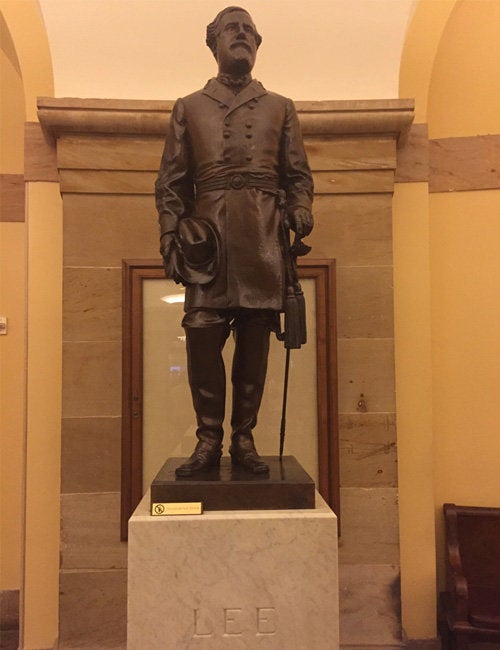
Lee was a commander of Confederate forces from Virginia. The state’s two senators, Tim Kaine and Mark Warner, both Democrats, said they support Booker’s bill.
“Senator Kaine thinks Senator Booker’s proposal is a good idea, and he plans to work with him on the bill and support it,” Kaine spokeswoman Sarah Peck said. “He also believes the Senate needs to work to address the fundamental inequities in our society that have left African-Americans and families of color in this country with far less wealth, higher unemployment rates, fewer opportunities and less protection under the law.”
In an interview Thursday morning with WRVA, a radio station in Richmond, Warner confirmed that he was going to work with Booker on his bill.
“I think, whether it’s Richmond, whether it’s Charlottesville, whether it’s towns across Virginia – and we probably have more memorials and monuments than any state – I think there’s going to have to be a local process in every community, and we’re going to have to have tough, and in many ways overdue conversations, about race. And I think, yes, context and questions will come up,” Warner said. “And you’ll find, I think, as the history is laid out, that many of these statues were put up, perhaps not as memorials, but were put up by arch-segregationists, in a way, to intimidate our fellow Virginians who were of African-American descent.”
Zebulon Vance, North Carolina

Vance was a Confederate military officer, as well as a governor and senator from North Carolina.
Rebecca Watkins, spokeswoman for Sen. Richard Burr (R-N.C.), said she was not familiar with Booker’s bill but noted that the decision on which statues go into the U.S. Capitol come from the state General Assembly.
North Carolina’s second statue honors Charles Brantley Aycock. Although he was not a Civil War figure, he was a white supremacist leader who promised to stop “Negro domination.” In 2015, Burr urged the General Assembly to replace Aycock’s statue with one of evangelical minister Billy Graham.
Sen. Thom Tillis (R-N.C.) did not return a request for comment.
Alexander Hamilton Stephens, Georgia
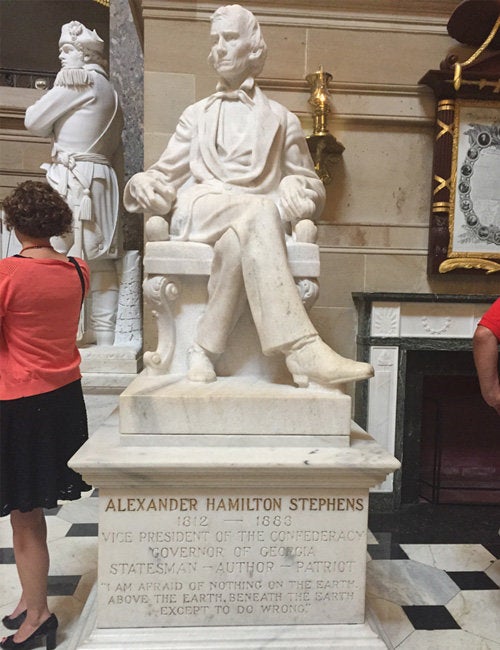
Stephens was vice president of the Confederacy. His statue in the Capitol is near the one of civil rights activist Rosa Parks. Neither of the state’s Republican senators, Johnny Isakson and David Perdue, returned a request for comment.
Ryan Grim contributed reporting.
Want more updates from Amanda Terkel? Sign up for her newsletter, Piping Hot Truth, here.
Sign up for the HuffPost Must Reads newsletter. Each Sunday, we will bring you the best original reporting, long form writing and breaking news from The Huffington Post and around the web, plus behind-the-scenes looks at how it’s all made. Click here to sign up!


